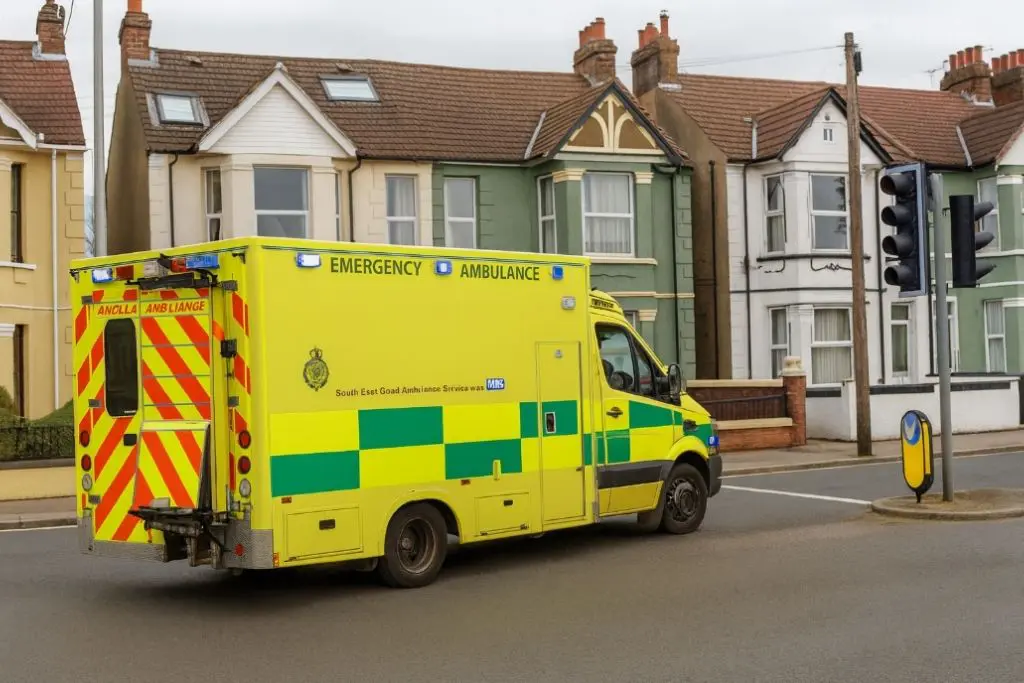South East Coast Ambulance Service (Secamb) and South Central Ambulance Service (SCAS) are set to share a single leadership team. This pioneering move creates the new South Central and South East Ambulance Group. It’s an opportunity to ensure long-term financial stability and enhance patient care across a vast area of southern England.

The two NHS Foundation Trusts confirmed the landmark partnership this week. They collectively serve more than seven million people across seven counties. This specific “group model” of governance is a first for English ambulance services. The structure is already successfully used by many acute hospital trusts.
The main goal is to use the group’s greater size to achieve efficiency. It aims to standardise clinical excellence and make services stronger. This resilience is vital against the major operational and financial pressures hitting the entire National Health Service. The trusts will keep their individual legal identities. They will also keep their local accountability. However, a single chief executive and a joint chairperson will now oversee both.
The plan will roll out in phases between late 2025 and 2027. The first step will be appointing the new, shared senior leadership team. Anne Eden, NHS England’s South East regional director, said the move offers “a real opportunity to improve care and access for our patients while offering better value for money.”
A New Approach to Ambulance Services
Secamb and SCAS pooling their senior leadership marks a major shift. It changes the way emergency care is provided. Ambulance trusts have historically operated as separate entities. Now, the new model aims to capture the benefits of a merger. These benefits include cost savings and resource pooling. It avoids the legal and logistical complexity of a full, official consolidation.
Health commentators often call this arrangement a “merger in all but name.” Roy Lilley, a respected health analyst and former NHS trust chief executive, called the model “a sensible, pragmatic move.” He said it’s designed to achieve savings and cut costs by combining back-office functions. This process skips “the palaver and the cost and the statutory requirements of a merger.”
The group’s area is huge. Secamb covers Kent, Surrey, and Sussex. This serves over 4.9 million residents. SCAS covers Berkshire, Buckinghamshire, Hampshire, and Oxfordshire. That region has about 2.8 million people. The combined operation will cover one of the busiest and most diverse areas in the country. It spans highly populated cities, quiet rural areas, and major motorways.
Aligning Leadership and Strategy
The immediate task is to recruit the joint chief executive and chair. These roles should be filled by the spring following a shared recruitment process. This shared governance will then guide the group’s work in three key areas: digital innovation, clinical best practice, and workforce development.
David Eltringham, SCAS Chief Executive, confirmed the group model “gives us the ability to respond more consistently, use our resources more effectively, and make sure patients receive the same high standard of care wherever they live.” Consistent care is very important. This is especially true where trust boundaries meet. It also matters when staff and resources must be shared during busy periods or extreme weather.
For Secamb, the collaboration is a vital step. The trust has focused on a major improvement programme recently. Chief Executive Simon Weldon stated the change would make services “fit for the future.” The two workforces combine to more than 8,000 staff. This large number allows for shared training, standardised protocols, and potentially more efficient deployment of specialist teams.
Focus on Financial Health
A core goal of the strategy is to get better financial value for public money. The NHS faces enormous pressure. All services must look for efficiencies. By bringing together back-office functions – such as IT, finance, and human resources – the new group expects to save money regularly.
Shared purchasing is another key aim. The sheer buying power of the combined group covers seven counties. This allows for purchasing equipment, medical supplies, and fleet vehicles in bulk at lower prices. The plan is to reinvest these savings directly into frontline services. This will help address issues like ambulance response times and staff well-being.
Public Scrutiny of the Plan
The trusts and NHS England highlighted the benefits for financial stability and patient care. However, patient advocacy groups have responded with caution. Streamlining operations always raises concerns. Questions about potential job losses and the impact on local services are inevitable.
Geoffrey Bowden, chairman of Healthwatch Brighton and Hove, voiced concerns about the cost of the “so-called streamlining effort.” He warned that “people would probably lose their jobs in this so-called streamlining effort.” Mr. Bowden confirmed that watchdogs would be “monitoring how this beds in and whether response times suffer as a result of it.” The new model’s main test will be to deliver efficiencies. It must avoid having the large scale of the operation disconnect decision-making from local community needs.
Both trusts’ performance against national emergency response standards is constantly reviewed. This scrutiny is therefore important. The success of the partnership will be judged on one thing. It must sustain and improve frontline performance across the entire south eastern region. Structural elegance is secondary.
The new leaders will soon begin the complex task. They must integrate key non-clinical services and harmonise technology. They also need to make sure the shared vision for clinical excellence is adopted across the combined region. The future stability and quality of local emergency services depend on this unique partnership’s success for millions of residents.
Opportunity for Shared Innovation
The new group offers a basis for real shared innovation, not just financial gains. Digital transformation is a major focus. The group can invest in and roll out advanced systems faster by using a unified technology strategy. Examples include digital patient records and advanced demand modelling. This shared approach allows for better prediction of patient needs. It also makes cross-border resource sharing more sophisticated. This capability will be essential during periods of extreme demand.
Furthermore, pooling clinical expertise from two major trusts creates a chance. It allows for the faster and more uniform development of best practice protocols. The goal is simple: a patient in any of the seven counties receives the same high quality of emergency care. This should hold true regardless of the old trust boundary. This collaborative framework could become a template for other UK ambulance services looking for similar improvements.


